The Queen of Trees
on May 24, 2022As you drive through Sabi Sabi, there is such a variety of what you might see, there are a magnitude of mammals, birds, reptiles, and insects, but also a great diversity of plant life, different species of grasses, shrubs and trees. The Savanna biome is distinguished by its open grassland area dotted with thickets and trees here and there. This variation of vegetation can be attributed to the variation of the soil types found there, as different soils support different vegetation. It is also a result of the topography, the undulating hills forming Sandy crests and low-lying marshlands, and the network of deep drainage lines in between.
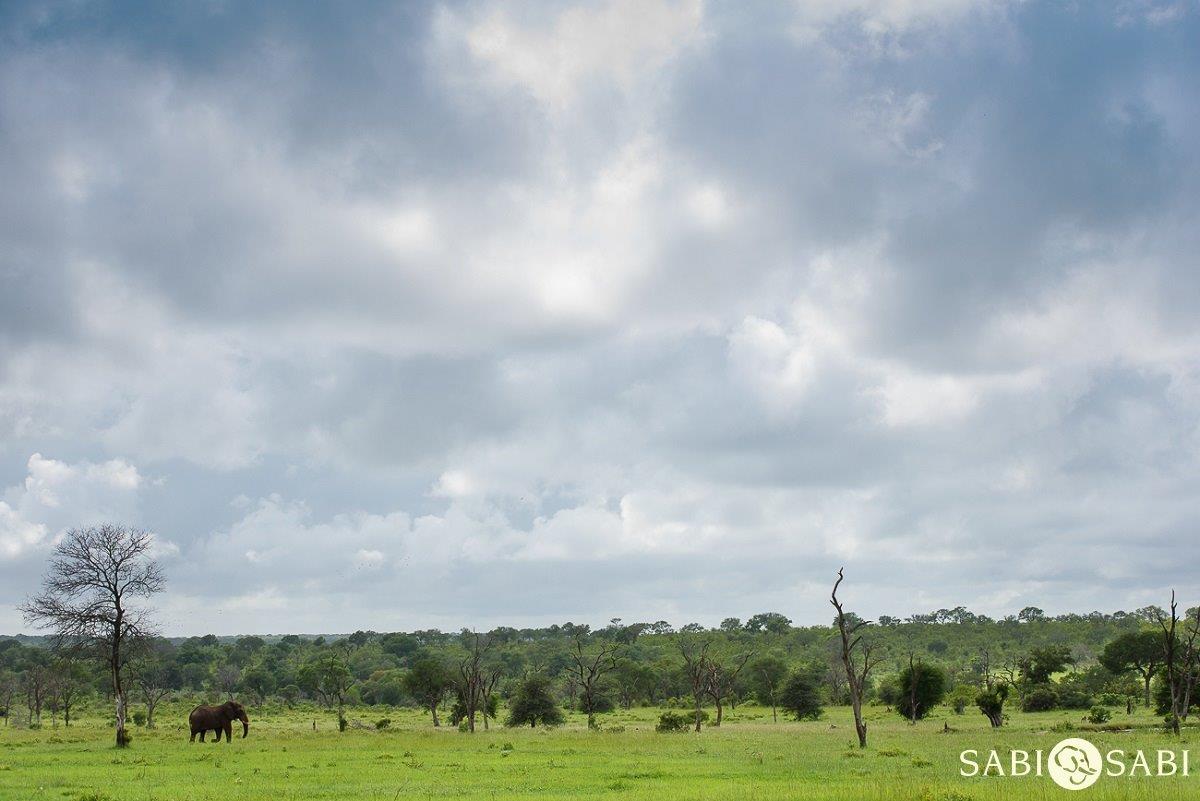
These deep drainage lines host the densest vegetation as they fall close to the water table and are therefore able to support the growth of enormous, evergreen trees along their banks. These Jackalberry, Mahogany and the Weeping Boer-bean trees all crowd the banks, towering over the deep, sandy drainage. Their dark green leaves and dark grey bark and branches creating a dense, cool corridor. And within these dark drainage lines, you can feel the temperature drop, compared to the scorching heat beyond. It is uncanny the feeling of relief when you move down the sheltered banks where the sand and dense foliage trap the coolness brought about by the water not far below the surface.
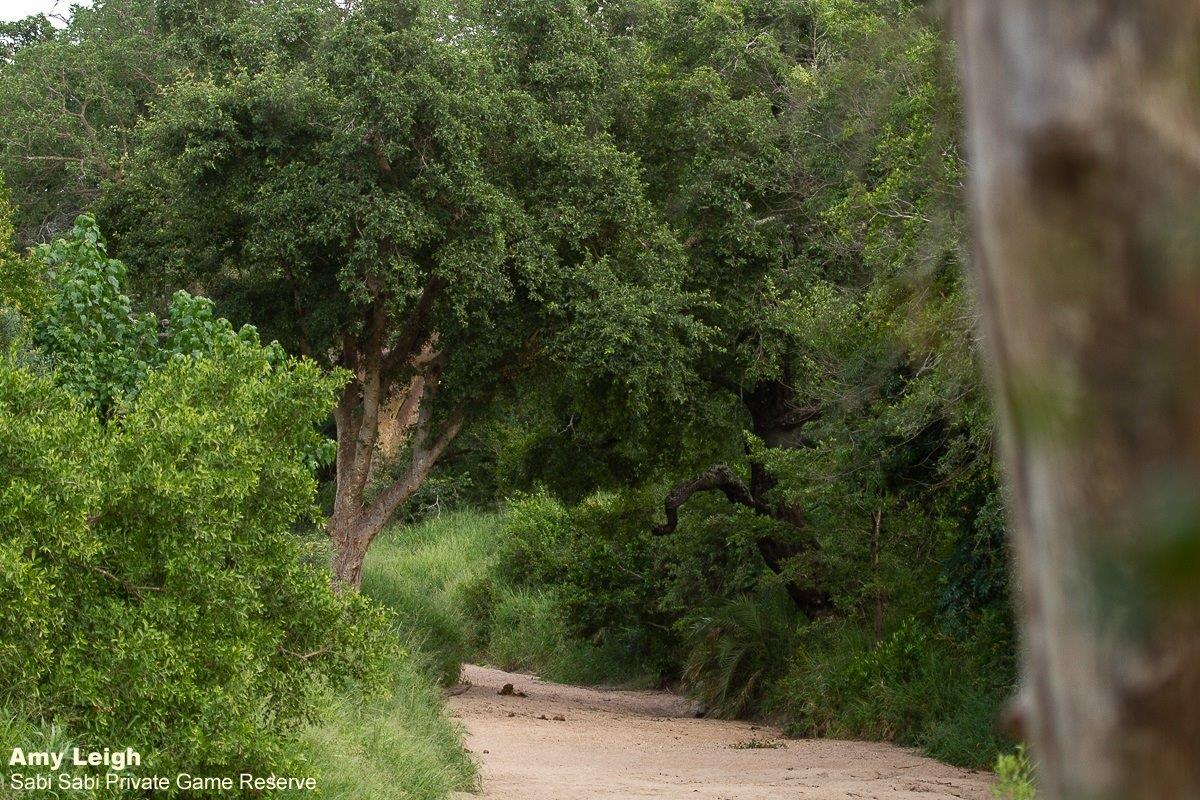
But as one walks up the drainage, the dull greys and greens are broken up by the soft yellow trunks of the Sycamore Fig. Nkuwa, The Queen of Trees as it is known in the local language of Shangaan, like many other trees along the drainage lines form a dense canopy over the drainage lines. With deep roots that penetrate way down into the ground, forming a buttressed effect to their base. Starting life as a seedling struggling in the dense shade of the thick riverine vegetation, it is amazing to see that they can eventually grow up to 30m tall. Such a large tree forms the perfect spot for our troops of baboon to roost overnight, even making use of the branches as a sentry point during the day, with views far and wide to keep vigil for predators as the troops forage in the grass and branches of the fig trees themselves.
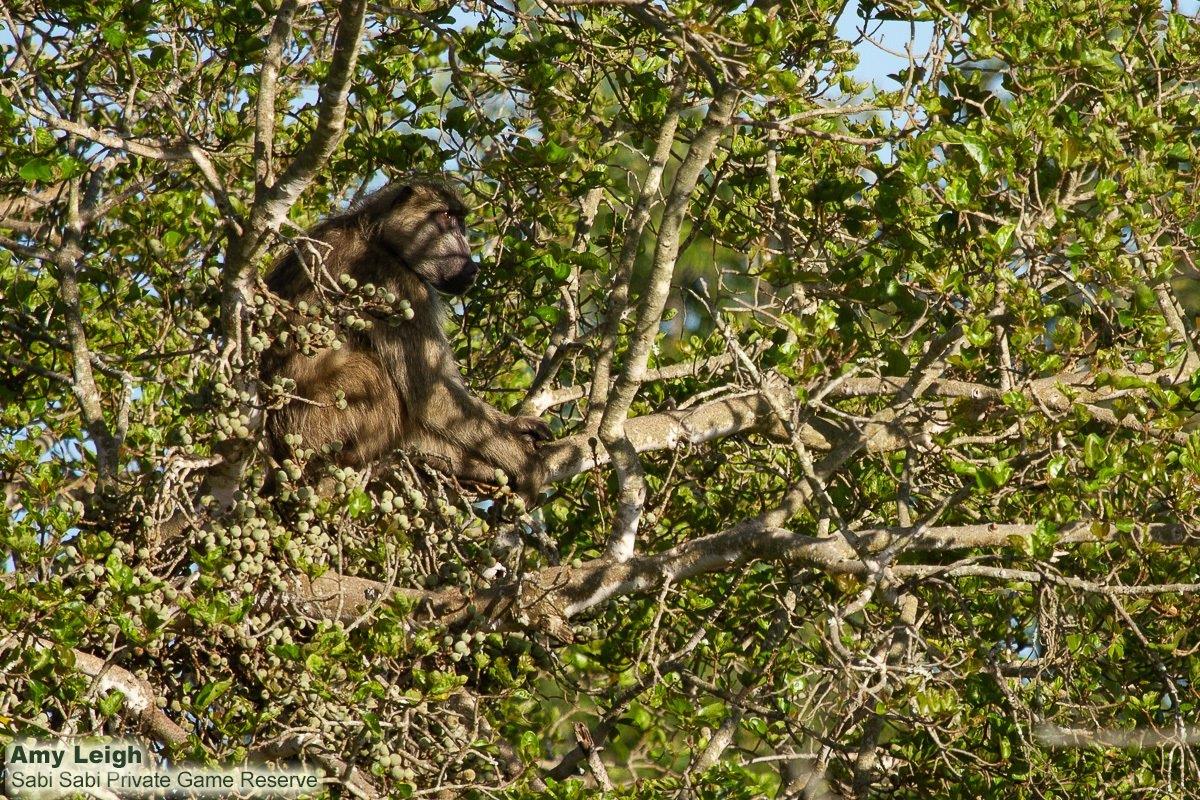
There are many different species of fig trees in our sub-region. We also see the Rock Fig here at Sabi Sabi, which gives the impression of being a candle whose wax has slowly dripped down over the face of rocky outcrops, working its way between cracks in the rocks where it can take advantage of the moisture and nutrients which is often caught. Although these figs do not grow quite as large as the Sycamore Fig, they are still a tree which stands out from the rest.
The diversity of life that is brought about by the presence of these fig trees is incredible. For any bird watcher, spending time in the cool shade of the tree and watching to see what birds come past can be a real treat. Species of frugivorous birds can often be seen hopping about the branches feeding on the fruit of the fig tree. Interestingly, unlike other fruit-bearing trees where the fruit are produced at the ends of the branches, the fig trees produce their fruit in large leafless clusters along the main trunk and the branches. The African Green Pigeon, with its bright yellow stockings, can always be seen and heard in the drainage lines, feeding happily on the ripened fruit.
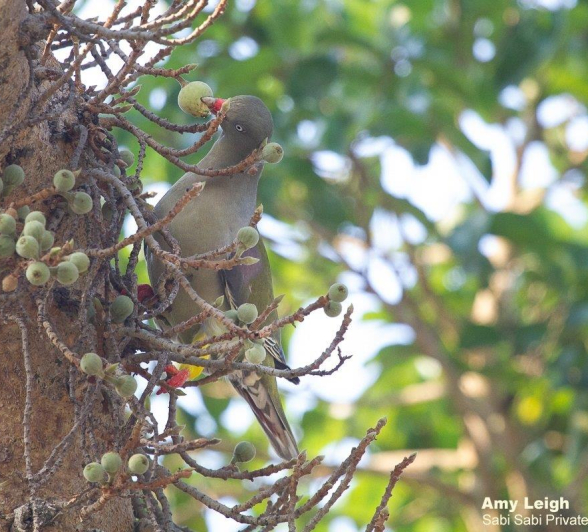
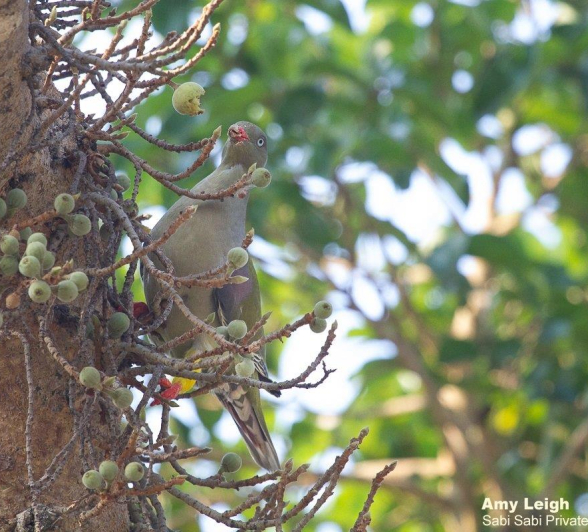
If you are lucky, you may see the flash of brilliant red in the wing of the Purple-crested Turaco as it flies from one tree to the next. Usually seen in pairs, so if you miss the first one in flight, keep an eye out for the partner.
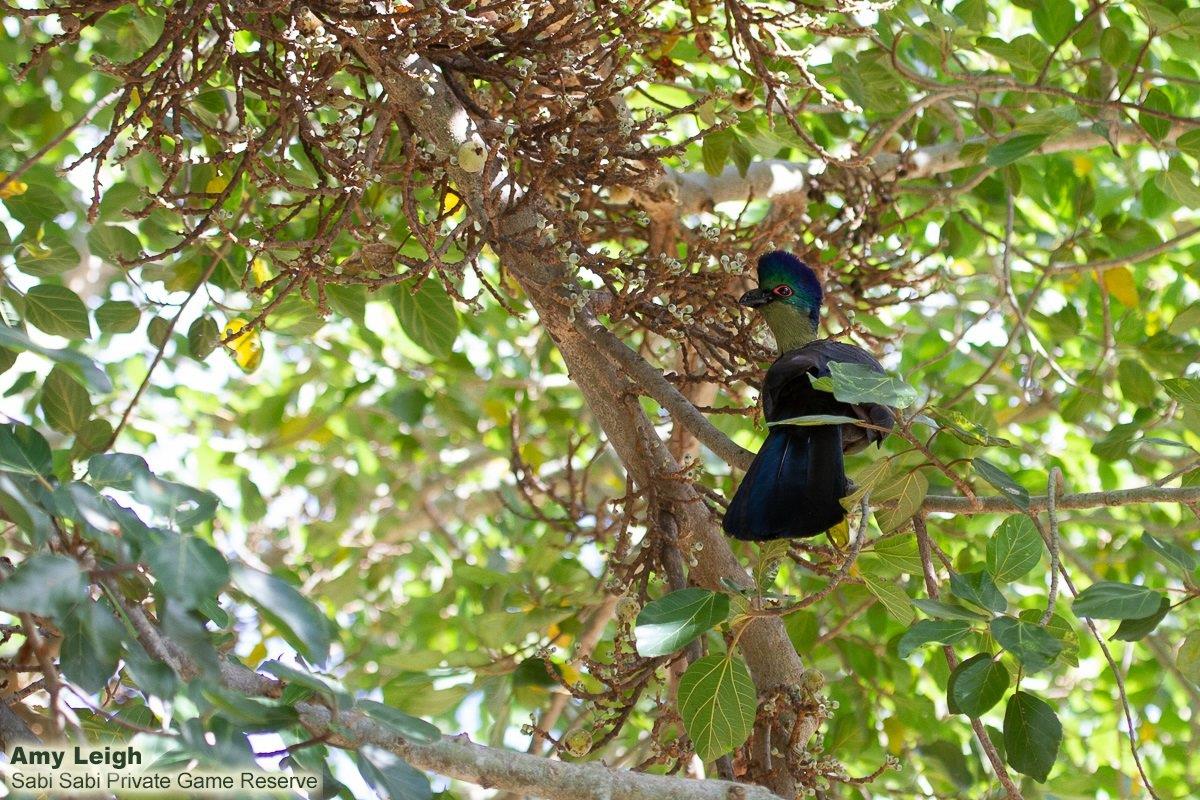
The “fruit” of the fig is also an interesting invention, and not really a fruit at all. Where most fruit are formed from the ovary of the flower, protecting the developing seeds within the pulp, the fig itself forms the protective cover around the hundreds of tiny flowers within, making it an inflorescence rather than a fruit. So where other plants rely on the transfer of pollen from one flower to the next before a fruit can develop, the fig forms in order for pollination to take place. Where usually, flowers are formed out in full display with nectars and bright colours to attract the attention of pollinators, the fig relies on a more specialised approach. Their flowers are actually pollinated by the tiny Fig Wasp in an obligate symbiotic exchange, in other words one cannot survive without the other.
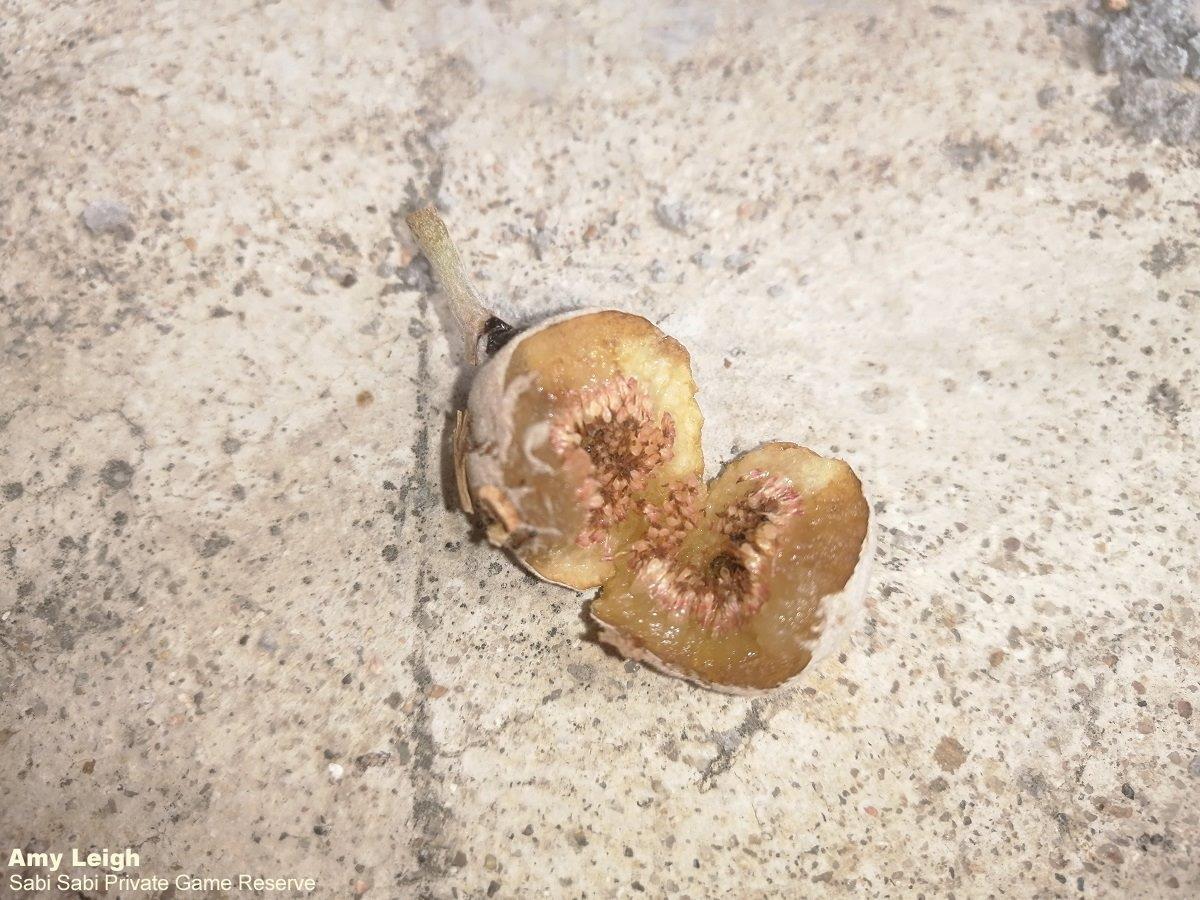
The female Fig Wasp, which hatched from an egg deposited in one of the tiny female flowers within a fig, will emerge and walk over the mature male flowers which have produced their pollen. The wingless male wasps which will have hatched first, will search for a female to mate with, and then work to excavate a hole to the exterior of the fig, but they never actually leave. The winged female will, however, be able to fly, taking with her the pollen of the flowers of her birthplace, which will be deposited in the flowers of the fig she chooses to lay her eggs. And so, the cycle continues, however as with anything in nature, it is not that simple. The movement of these and other insects around the sweet figs will attract insect-eating birds, which take advantage of the constant food source available around the figs.
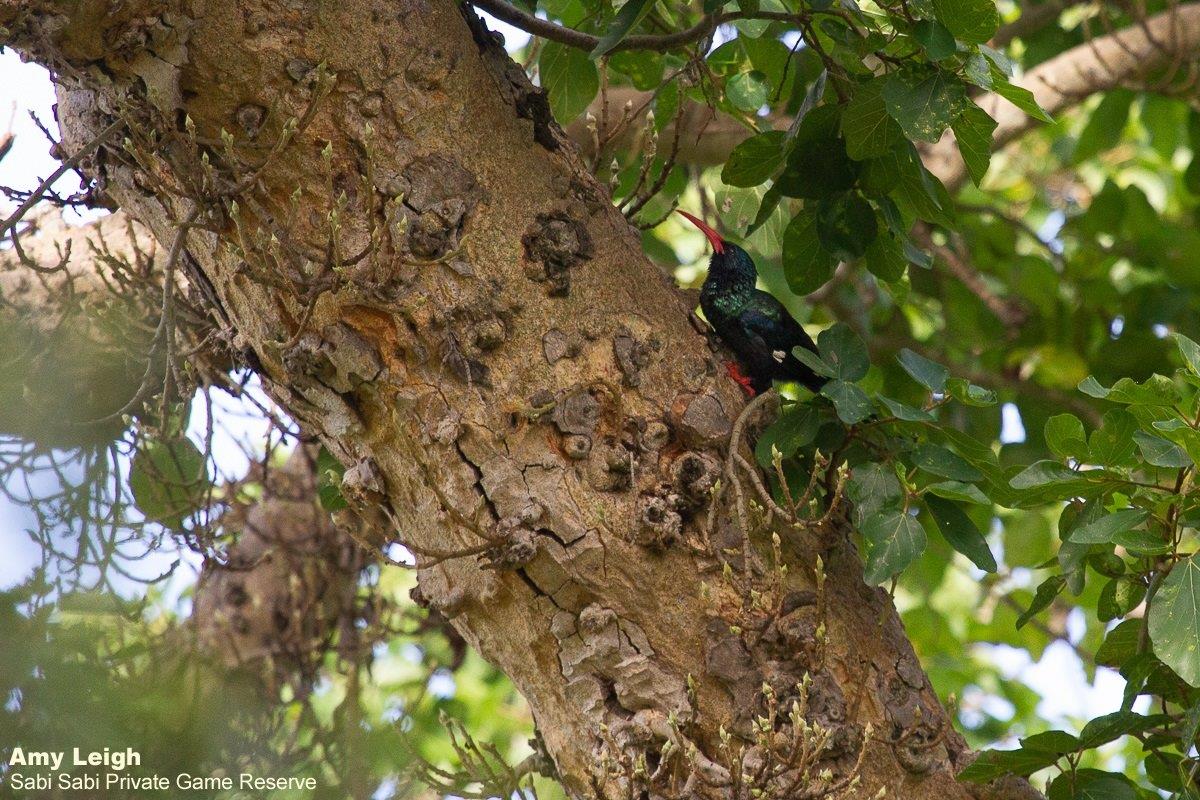
Just as humans enjoy the figs in their jams and preserves, a number of mammals utilise the fruit. As mentioned, the fig trees form a favourite spot for baboons for roosting and foraging, so too do the vervet monkeys. Morsels that are dropped to the ground will be eaten by the antelope and elephant who do not have the ability to climb into the branches. Even the seed eating birds, like the Laughing Dove will totter around beneath the trees to search for seeds left behind.
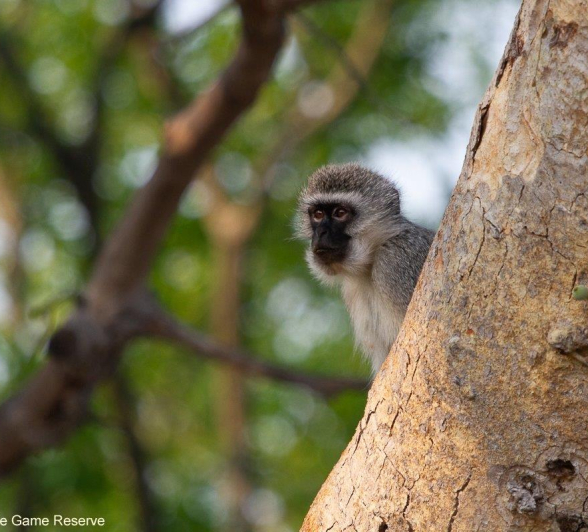
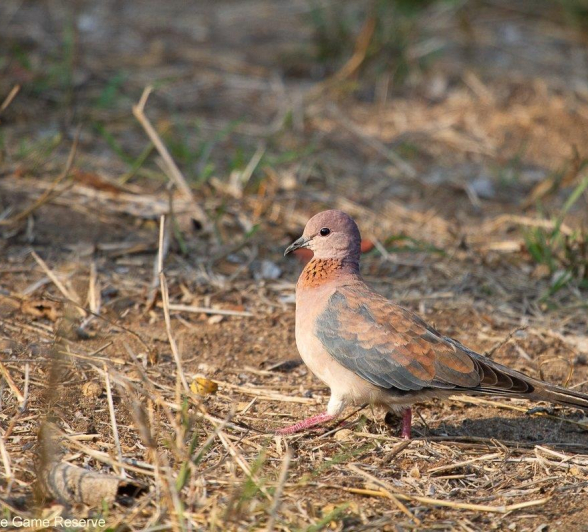
As with any tree, once a branch dies, it remains an important part of the ecosystem, forming a safe location for birds and animals which roost in tree cavities to create their nests, within which they can raise their young. Grey hornbills, barbets and woodpeckers to name just a few, even a Barred Owlet has made its home in one of the many nooks and crannies amongst the branches.
It never ceases to amaze how many uses a single tree can have within its environment, from food for a magnitude of organisms, even humans, to providing shelter for creatures great and small. And to think this enormous tree, and all who rely on it, is dependent on a tiny wasp for survival, and vice versa. The most unexpected relationship, and yet it teaches us not to take for granted the little things, because sometimes the smallest act can have a truly great impact.






